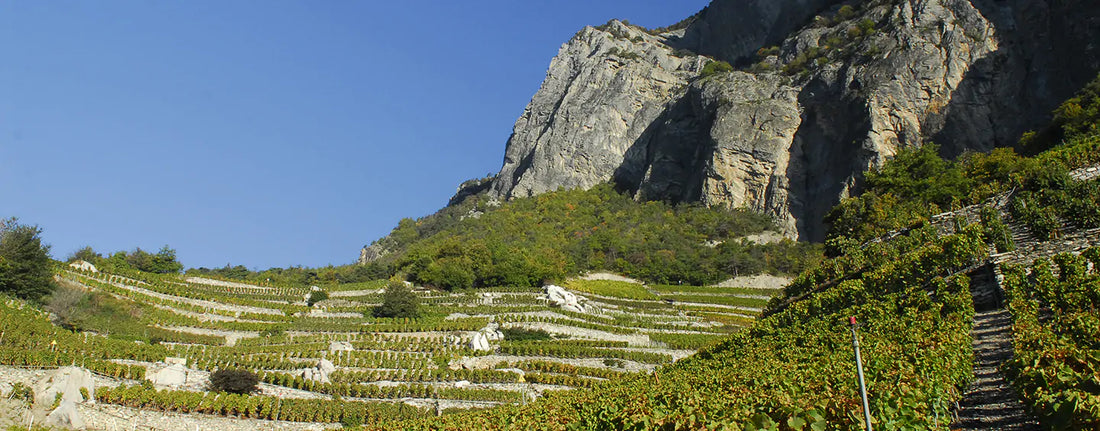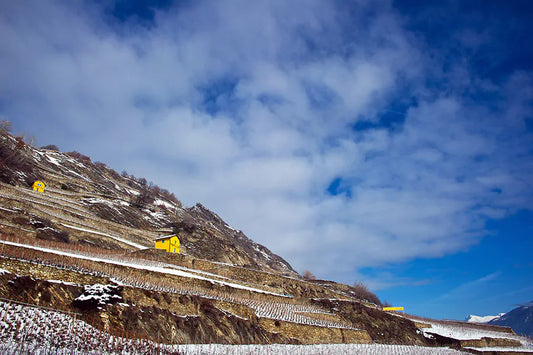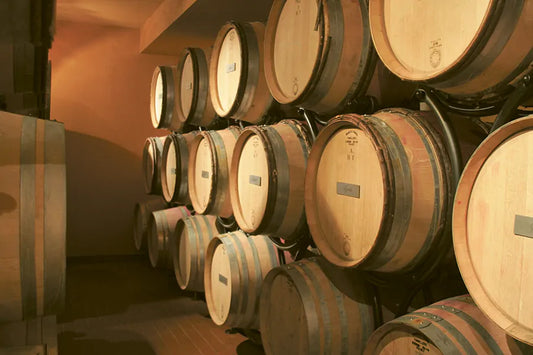Valais: A vineyard of all superlatives


This represents a third of Switzerland's wine-growing area and therefore makes it the main wine-producing canton of the country. Valais enjoys many specific features that make this region so special. It is not surprising that the people of Valais are convinced of the quality of their wines and speak of them with great pride.
The Bernese Alps to the north and the Valais Alps to the south hold back the clouds. As a result, it rarely rains there. Valais is the driest Swiss canton. Efficient irrigation possibilities are therefore necessary. The glaciers provide sufficient water but it was necessary to build bisses to ensure the delivery of this water. Most of the Valais vineyards are located along the Rhône, mainly on the right bank facing south. The left bank, facing north, is planted with grape varieties that require less sunlight.
The sun shines for more than 2,000 hours a year.
South of Visp (Visp) at the entrance to the Zermatt valley, the vines climb up to Visperterminen, a village located at an altitude of 1,050 meters above sea level, which makes it the one of the highest vineyards in Europe.
They structure the vineyard, equalize differences in level, form plots where the slope is too steep and prevent erosion which is one of the great challenges of mountain viticulture. Dry stone walls are also indicators of the characteristics of the soil because they were built with local materials.
The soil characteristics are multiple in Valais. In Lower Valais (Fully – Martigny), we find crystalline soils and metamorphic rocks close to granite, in the Sion region schist and sandstone and in the Sierre/Salquenen region limestone terroirs. Locally, there are also alluvial soils formed by glaciers, torrents and wind.

A symphony of grape varieties
Valais impresses with the great diversity of its grape varieties. The most widespread red grape varieties are Pinot Noir and Gamay which, when blended, produce Dôle. In whites, Chasselas and Sylvaner prevail. However, the real treasures of Valais are the unique native grape varieties such as Arvine, Amigne or Himbertscha in white and Humagne Rouge, Cornalin or Eyholzer Roter in red. They are what make this vineyard unique.
In Valais, it is common to give a specific name to certain varietal wines: Chasselas is called “Fendant” and Sylvaner “Johannisberg” . As for Savagnin blanc, we find it under the name “Heida” or “Païen” . Marsanne is called “Ermitage” and Pinot Gris “Malvoisie” . We are also impressed by the diversity of wine styles: from easy-drinking Fendant to heady sweet wines, you can find everything.
So, no mystery if the people of Valais only drink wines from their canton because the diversity there is such that there is something for everyone!
